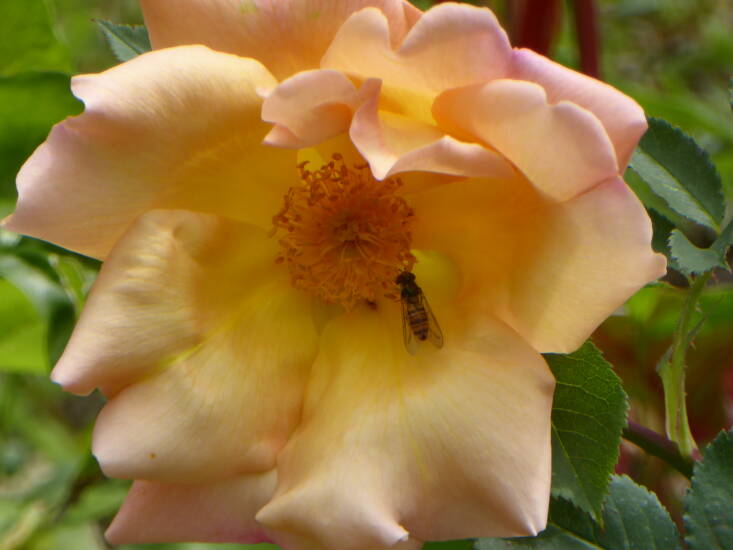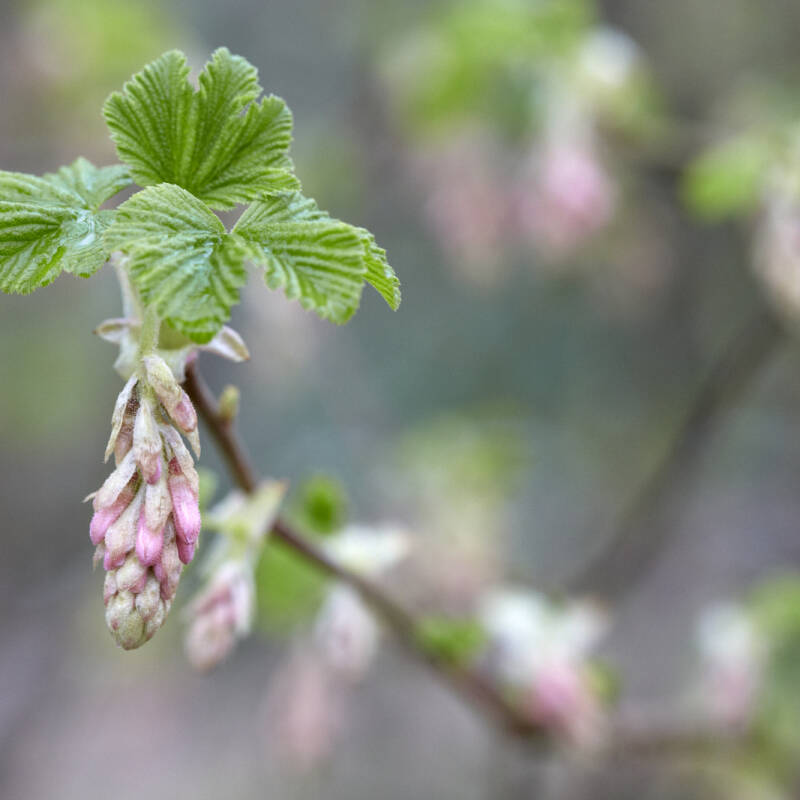There are many considerations when it comes to choosing a rose: Do you like the color? Will it repeat flower or produce wonderful hips? Does it have a delicious scent? Will it grow to suit the space or the way you want to use it? Few of us, though, give a thought to whether it will be beloved by bees and other pollinators, and yet roses can provide an excellent source of nectar.
Photography by Clare Coulson, unless otherwise noted.

Many modern roses are bred with a laser focus on form, color, scent, and health. Densely ruffled flowers and deep cups are often prized for their exquisite, romantic looks, too. But pass by these beauties, because it’s the single, open roses that work best for pollinators—if the stamens are visible and easy to access, so much the better for busy bees.

Most species roses fall into this category —these wild plants are the original roses. They are tough and come in many forms—shrubs, climbing, rambling—but tend to have single or open flowers and exceptionally good health. Rosa glauca and rugosa, as well as dog roses, are some of the best known species roses, but there are hundreds of different types.
Roses that have been bred can also display similar qualities to these ancestors, echoing their open flowers, visible stamens, and profusion of blooms. Here are a few of our favorites.
Rosa ‘Florence Mary Morse’

Rosa ‘Fighting Temeraire’

Rosa ‘Blush Noisette’

Rosa ‘The Lark Ascending’

Rosa ‘Rambling Rector’

Rosa ‘Frances E. Lester’

Rosa ‘Sceptre’d Isle’

Rosa ‘Madame Gregoire Staechelin’

See also:
- Roses in the Kitchen: How to Bottle Their Sweet Fragrance for Syrups and Drinks
- 8 Favorites: Native Roses
- Dreaming of Roses? Now’s the Time to Plant Them Bare Root












Have a Question or Comment About This Post?
Join the conversation